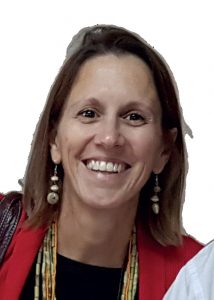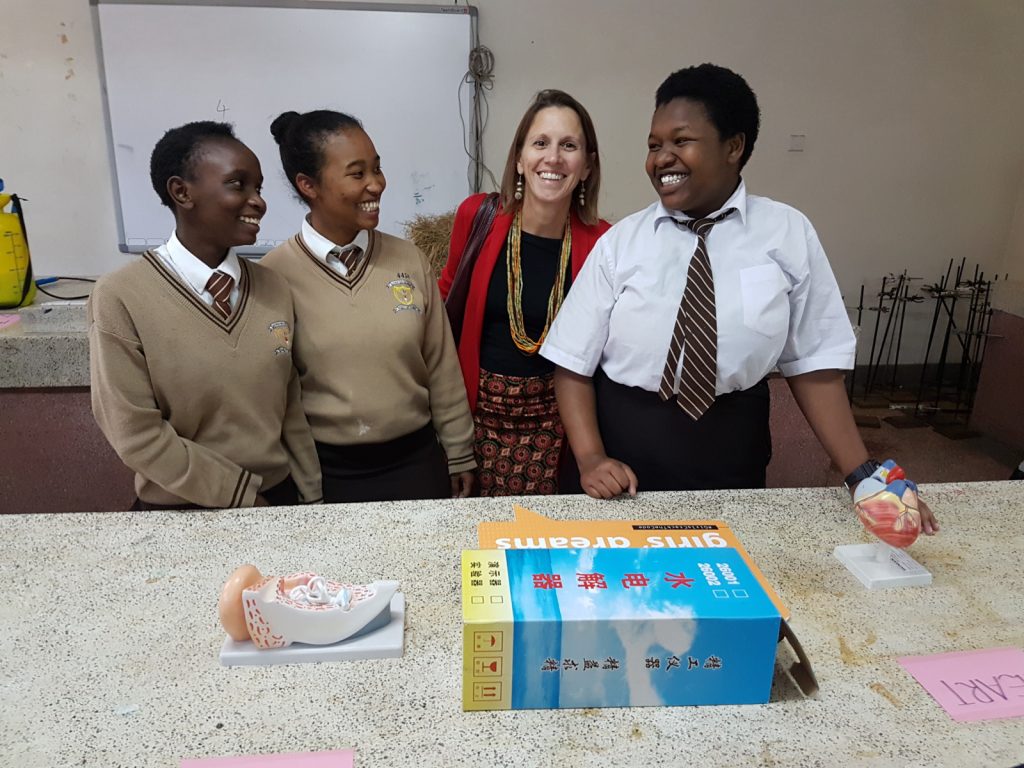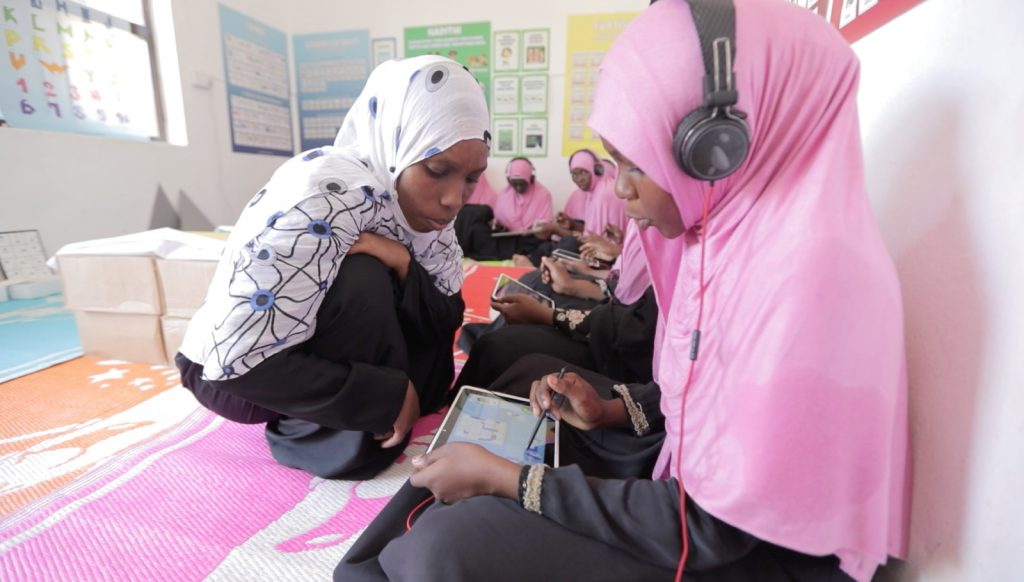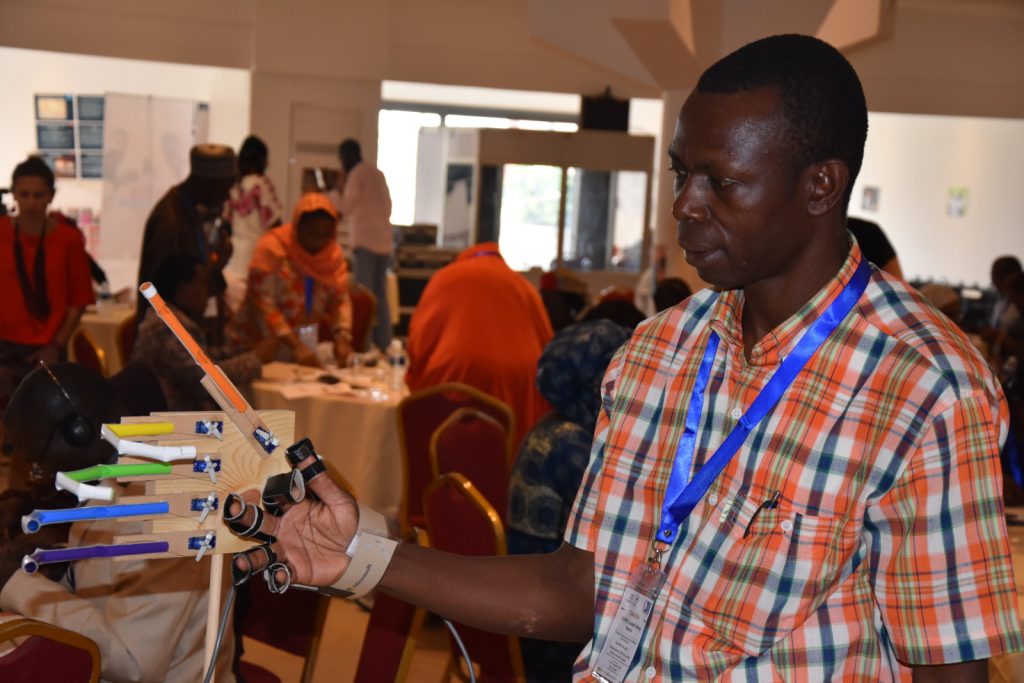UNESCO: Breaking down gender segregation in STEM is good for innovation, economies and the sustainability of our planet
In 2017, UNESCO published Cracking the Code: girls’ and women’s education in science, technology, engineering and mathematics. Its aim was to decipher the factors that hinder or facilitate girls’ and women’s participation, achievement and continuation in STEM education. Five years on, we ask Justine Sass, Chief of the Section of Education for Inclusion and Gender Equality, how much has changed since the report’s publication
HAVE WE SEEN IMPROVEMENTS IN THE REPRESENTATION OF GIRLS AND WOMEN IN STEM SINCE THE PUBLICATION OF CRACKING THE CODE?
In Cracking the Code, we were looking at several things related to girls’ participation and learning in STEM. First, we were looking at learning achievement in STEM subjects and how girls were doing compared to boys at different levels of education. Second, we reviewed young women’s enrolment and completion in STEM fields in higher education.
Let’s start with improvements in learning since our report. There are no science assessment data in low-income countries, but girls are now outperforming boys in science in secondary school in the majority of middle- and high-income countries. This is particularly the case in the Arab States where the percentage of girls achieving minimum proficiency in science exceeds that of boys by 15 points in countries like Bahrain and Saudi Arabia at Grade 4, and by 21 points in Bahrain, Jordan and Oman among Grade 8 students.
The gender gap in mathematics is also shrinking. While boys in most middle- and high-income countries tend to perform better than girls in mathematics in the early grades, on average, they do not have an advantage later. The gender gap is reversed to favour girls, for example, among Grade 8 students in Bahrain (8 points), Jordan (7 points), Oman (13 points), Romania (8 points) and Turkey (5 points). This being said, in 50 of 54 countries, girls are less likely to get top marks in mathematics, despite performing better than boys at school overall. Gender stereotypes, low levels of self-confidence in these subjects, and other inequalities still prevent girls from realising their full potential.
In terms of higher education, the share of women in the student population has continued to rise; in 2020 there were 113 women for every 100 men enrolled in higher education. While the share of women graduates in scientific fields continues to increase in all developing regions (except Latin America and the Caribbean, where their participation was already high), women are still less likely to major in other aspects of STEM such as engineering, manufacturing or construction, and ICT studies. And these gaps are the widest in low-income countries. This will take time to change, as we have to fill the pipeline – getting new generations of women students to take up these studies and complete their degrees.
While we cannot comment on these changes yet, what we can say is that there has been a growing push to improve women’s participation and experience in STEM. Rwanda has been a trailblazer in championing women in STEM, including a commitment to triple the number of girls in these fields. Costa Rica established a National Policy for Equality between Women and Men in Training, Employment and Enjoyment of the Fruits of Science, Technology, Telecommunications and Innovation (2018–2027). In the United States, many private companies working in science, engineering and technology are making hiring a diverse workforce, including greater representation of women, a pillar of their annual strategies.
And there are growing efforts by women’s colleges and universities to educate women in STEM, including the Kiri Women’s University of Science and Technology in Kenya, the Women’s Institute of Technology in India, and many women’s colleges in the United States. Many educators have been looking to these examples to inform women’s participation and experience in STEM fields at coeducational institutions.
© UNESCO
© UNESCO Dar es Salaam/Kimlong Meng
© UNESCO/Justine Sass
We need to keep monitoring progress, documenting good practice, and catalysing cooperation to scale up these and related efforts to get more women into STEM.
HAS THE REPORT ACHIEVED ITS AIM TO STIMULATE DEBATE AND INFORM STEM POLICIES AND PROGRAMMES AT GLOBAL, REGIONAL AND NATIONAL LEVELS?
Definitely, and we have continued to cooperate with other organisations to leverage progress. This includes the African Union’s International Centre for Girls’ and Women’s Education and their efforts to gender-responsive STEM policies and programmes across the continent. We are also collaborating with the International Association for the Evaluation of Educational Achievement (IEA) which supports learning assessments in science, maths and technology in over 60 countries, on a series of policy briefs to inform STEM programmes at country-level based on evidence. We are supporting countries like Uganda to develop national guidelines on gender-responsive pedagogy, linked to its National Teacher Policy, which includes strategies to enable girls and boys to fully participate and achieve in STEM subjects. We continue to accompany countries in their efforts to ensure inclusive and equitable quality education to advance girls’ participation in STEM.
WHY IS UNESCO SO INVESTED IN THIS ISSUE?
UNESCO prioritises efforts to advance gender equality, and the realisation of gender equality in and through education. This means more than just having equal numbers and proportions of girls and boys in different levels of education, although this is an important starting point. It means unleashing the power of education to tackle the unequal power relations, social norms, discriminatory practices and belief systems that underpin gender inequality and exclusion in society. It’s an education that considers the needs, interests and lived experiences of all learners, and which tackles the intersecting and simultaneous disadvantages that may inhibit them from fully exercising their right to participate in, complete and benefit from education.
We believe in breaking down the gender segregation that exists in educational pathways and careers, and that getting more girls and women in STEM fields isn’t only good for them, it’s good for innovation, economies, the development of entire countries and for the sustainability of our planet.
THE REPORT STATES THAT “EDUCATION SYSTEMS AND SCHOOLS PLAY A CENTRAL ROLE IN DETERMINING GIRLS’ INTEREST IN STEM SUBJECTS.” ARE SCHOOLS MORE INTEGRAL TO THIS ISSUE THAN POLICY CHANGES, FOR EXAMPLE?
The report shows that it’s not schools or education systems alone that determine whether or not a girl will pursue STEM studies or careers. Girls’ own interests and motivations, as well as parents, peers and other influences are also important. But schools are where children and young people spend such a significant part of their lives. Schools are where they often have the most exposure to STEM subjects, both through formal education and extra-curricular opportunities. It’s in schools, typically, where children and youth develop their own perceptions of their potential in STEM studies, where they begin to understand what careers in STEM could look like, and where educational and careers pathways begin to take shape. Schools are also important bridges to parents, communities, apprenticeships, mentorship and other opportunities to transition into the workplace and society. As such, schools really are important.
WHAT IS UNESCO DOING TO SUPPORT SCHOOLS?
We have a multi-pronged strategy to advance girls’ and women’s participation in STEM. There are a lot of pieces to this puzzle, let me share some of these:
- Data and evidence: You can’t find a solution if you don’t know that you have a problem, and you can’t celebrate success if you don’t
know that it exists! UNESCO supports the collection and use of data to inform action. This includes supporting countries to deliver learning assessments in maths and science that help them understand who is learning and who isn’t, and the factors that support learning and achievement. Beyond Cracking the Code, we have also looked specifically at efforts to get more girls and women into STEM in Asia and in technical and vocational educational and training programmes.
- Capacity development: UNESCO supports countries to build the national and institutional capacities to deliver gender-responsive STEM education where all children can learn, grow and develop to their full potential. In sub-Saharan Africa, UNESCO has worked with Ministries of Education, the African Union, and other partners in over 20 countries to build the capacity of teachers, teacher trainers and school administrators, and close gender gaps in these fields. In Niger, an estimated half a million students (40% of whom are girls) now have access to gender-responsive pedagogy. If you’d like to hear what the girls have to say about this, listen to Angel and Fatma from Tanzania: www.youtube.com/watch?v=MAoujwmQ0j8
- Policy: UNESCO supports countries to improve their policy and legislative frameworks to advance girls’ right to education, including educational pathways in STEM. For example, UNESCO supported Uganda to develop national guidelines on gender-responsive pedagogy, which includes strategies to enable girls and boys to fully participate and achieve in STEM subjects. It is helping thousands of girls participate more actively in the classroom, leading to better learning outcomes and a brighter future for girls.
- Mentoring and role models: Role models and mentors have been found to be particularly effective in tackling gender bias. They offer girls an authentic understanding of STEM studies and careers, showing them that they, too, can become who they dream of becoming. UNESCO has supported STEM camps and school-based clinics where girls have access to role models and mentors in STEM in countries across the globe. In Kenya, during the COVID-19 pandemic, UNESCO supported the country’s STEM mentorship programme to go digital through radio and online platforms, reaching 12 million listeners in the first three months alone. UNESCO also amplifies what girls are doing themselves to be role models and support learning, like Deepa from Nepal: www.youtube.com/watch?v=HQvryT3todA
ONE OF THE KEY STRENGTHS OF THIS REPORT IS THE IDENTIFICATION OF INTERVENTIONS THAT PROMOTE GIRLS’ AND WOMEN’S INTEREST IN AND ENGAGEMENT WITH STEM STUDIES. ARE THESE INTERVENTIONS STILL RELEVANT FIVE YEARS ON?
Definitely, but the way we are delivering them has had to evolve, particularly in the context of COVID-19 extended school closures where school-based interventions were unable to be delivered. We believe in an ecosystem of interventions that address the factors holding girls back from pursuing these fields. This requires engagement not only with girls, but also with parents, their peers in schools, teachers, principals and other school staff, and community and media influencers. Some of these interventions include:
- Linking girls to female role models and mentors to build their interest in and understanding of STEM careers, and to break stereotypes that STEM studies and careers are not for women.
- Building teacher capacity at all levels of education to understand and address unconscious bias in the teaching practice, to engage all learners equally, and to create an inclusive, dynamic and safe learning environment.
- Removing gender stereotypes and bias in STEM curricula, textbooks and learning materials, ensuring visibility of women STEM innovators and leaders, and closing gender gaps in digital access and skills.
- Expanding girls’ access to scholarships, fellowships, competitions and prizes that address financial constraints to their participation and can draw them into higher education programmes in these fields.
- Establishing and implementing policies and legislation that support equal education and career pathways, and zero discrimination in these fields.
IF THERE IS ONE THING SCHOOLS OR TEACHERS COULD BE DOING TO TACKLE UNDER-REPRESENTATION IN STEM, WHAT SHOULD IT BE?
This is a really difficult question, as we believe that there isn’t really a magic bullet or one single action that will tackle girls’ under-representation in STEM. At UNESCO, we think this needs action within and beyond school walls to reach across sectors and engage girls and women, boys and men to identify solutions to local challenges.
I guess if I were pressed to choose one action at the school level, I would say invest in teachers. Beyond parents, teachers can be one of the most important influencers in a child’s life. We need to invest in teachers’ capacities, confidence and subject expertise in STEM and their ability to create equal learning pathways for girls and boys. We need to recruit more women teachers in these fields to break stereotypes and to serve as role models for both boys and girls. And we need to ensure teachers have the support systems and resources they need to change harmful gender norms, expectations and stereotypes that hold girls back from learning and participating in STEM.
ARE THERE ANY UPCOMING UNESCO PROGRAMMES TEACHERS AND STUDENTS SHOULD KNOW ABOUT?
UNESCO played a leading role in supporting preparations for the Transforming Education Summit that took place mid-September 2022 under the leadership of the United Nations Secretary-General at the United Nations in New York. The Summit was convened in response to a global crisis in education – one of equity, inclusion, quality and relevance. Its aim was to mobilise ambition, solidarity and solutions to recover pandemic-related learning losses and sow the seeds to transform education in a rapidly changing world. This includes steering digital transformation to promote just and equitable learning, addressing educational exclusion and gender inequality, and supporting the financial investments needed to ensure no one is left behind. It’s part of a new vision for the future of education. It isn’t a meeting, it’s a movement and well-worth following and contributing to: www.un.org/en/transforming-education-summit
WHAT ARE YOUR HOPES FOR THE FUTURE?
Cracking the Code has helped countries and organisations understand the factors holding girls back from education and careers in STEM fields, and what we need to do to improve the interest, engagement and achievement of girls in these fields. It has provided UNESCO with a strong foundation for further policy and technical support to countries, and catalysed many partnerships, commitments and actions to take forward the work. Our hopes remain the same as they have always been: Girls and women are key players in crafting solutions to improve lives and generate inclusive and sustainable development that benefits us all. They are the greatest untapped population to become the next generations of STEM professionals – we must invest in their talent.
MEET JUSTINE

Chief, Section of Education for Inclusion and Gender Equality, UNESCO
I’ve always been interested in how public policy enhances or restrains opportunity. In high school, I watched the fall of the Berlin Wall. In my college years, I saw the end of apartheid in South Africa, and the rise of Nelson Mandela to power. I had naïve, young dreams of being part of the serious change happening in the world around me. Studying poltical science at university seemed to be the right path to me at the time.
I didn’t really have a clear career goal in mind. I knew I wanted a job that pushed for social change, equality and rights. I wasn’t so clear on how to do that, though, or what jobs in those fields looked like. The internet wasn’t a thing when I started university – our understanding of possible careers was so very limited. I went into the Peace Corps within a week of the end of university with the hopes that it would give me a bigger vision of what was possible.
What I love most about the work I do is the people – those who work beside me and those whose lives we aim to impact. My colleagues are all passionate about the issues we work on and are driven more by that than by anything else. It’s inspiring and nourishing to come to a job that aims to catalyse change, and to support equal opportunities for learning and equal futures for all.
Interacting with those we aim to support is even more inspirational for me. It’s harder to see in my current job in a Headquarters post, as we are several levels removed from the field work, but when I go out for project visits to exchange with our Ministry and other partners, or to hear from our young learners and activists on the challenges they are facing and the brilliant efforts they’re making, this is really the golden nugget. Change can sometimes feel slow and hard, like two steps forward and another one back, but it’s really worth the effort.
My one piece of advice is you can be anything you want but it might take some time to figure that out so don’t rush it. Don’t be discouraged if you’re not sure yet, or if the advice you get from your parents, school counsellors or anyone else doesn’t quite fit with your mindset or dreams or, for that matter, your uncertainty! You have your whole life ahead of you. Take the first step towards the life you want to live – the next steps will follow.




